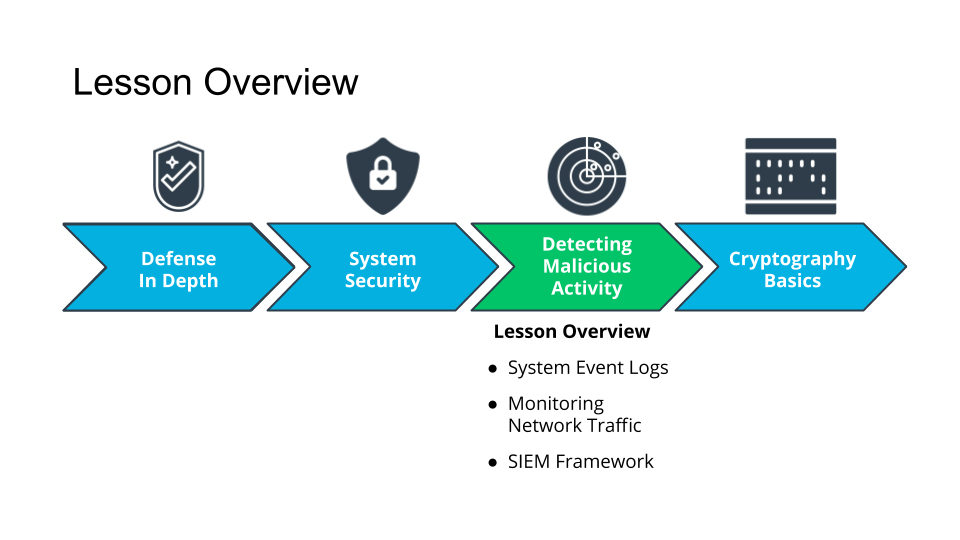17. Monitoring and Logging for Detection of Malicious Activity Lesson Conclusion
Monitoring and Logging for Detection of Malicious Activity Lesson Conclusion Heading
Monitoring and Logging for Detection of Malicious Activity Lesson Conclusion
ND545 C02 L03 A16 Lesson Conclusion V3
Monitoring and Logging for Detection of Malicious Activity Lesson Conclusion Text
Great job on making it through this lesson! You have already learned so much now you can add monitoring and alerting to your skillset!
In the next lesson, we're going to learn about cryptography! Turn to a fresh page in that notepad and let's get into it!
*As a side note, this course is a foundational course that is meant to help build the knowledge to become job-ready, but you will likely need additional training and/or coursework in order to obtain a job in this field. These foundations will set you up for success going forward and are vital to your success in this field. *

Lesson Overview
Glossary and Resources
Glossary Terms
Here's a list of all new terms from this lesson:
| KeyTerm | Definition |
|---|---|
| PII | Personally identifiable information, is any data that could potentially be used to identify a particular person. Examples include a full name, Social Security number, driver's license number, bank account number, passport number, and email address. |
| Scalability | is the ability of a computing system to grow or expand gracefully. |
| Vulnerability Scanning | is an automated threat that uses bots or web crawlers to identify security weaknesses in your website and underlying architecture. |
| WhoIs | WHOIS isn't an acronym, though it may look like one. In fact, it is the system that asks the question, who is responsible for a domain name or an IP address? In other words, it's the contact information for IP addresses and Websites. |